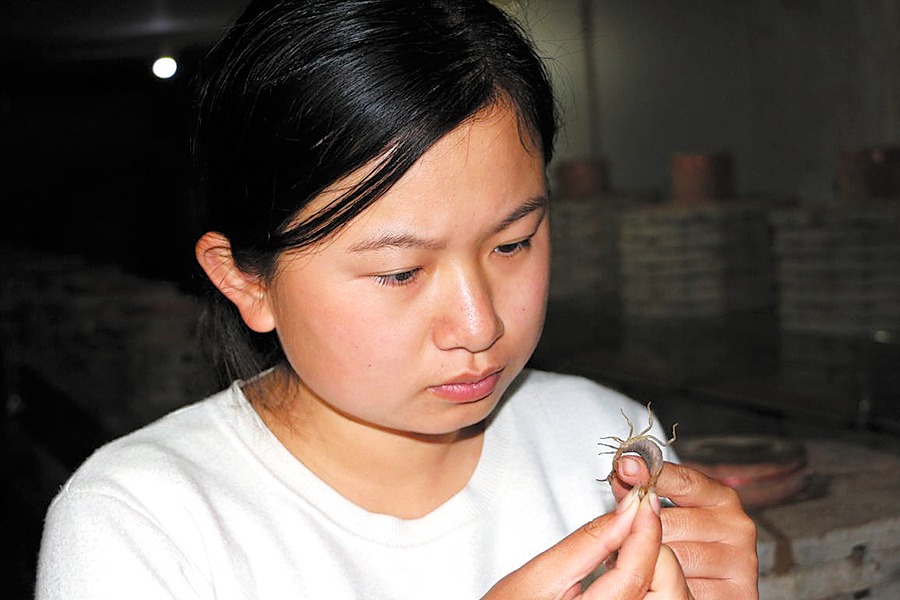Scientists speed breed rice on edge of desert


Thanks to soilless farming, artificial lighting and other technologies, rice now being planted on the edge of the Taklimakan Desert in the Xinjiang Uygur autonomous region has a significantly shorter growth cycle.
A group of scientists from the Chinese Academy of Agricultural Sciences recently announced the success of a trial planting in which a conventional rice variety took just 60 days, less than half the normal duration, to mature in greenhouses built on vast swathes of wasteland in Hotan in the southern part of Xinjiang. Inside the facilities, rice plants were grown in nutrient solutions on shelves, which helped save space. Artificial lighting was also used to help rice grow nonstop.
In contrast, conventional rice farming involves nurturing seed into rice seedlings, planting them in fields and waiting for harvest, and takes about 120 to 150 days on average to finish the whole process.
"Hotan has endless deserts, and good sunlight and heat resources," said Yang Qichang, a chief scientist from the academy's Institute of Urban Agriculture in Chengdu, Sichuan province, who led the project. "It is an ideal place to conduct farming research using the otherwise wasted land."
Yang started looking into the possibilities of fast-tracking rice growth in 2016.
By 2021, Yang and his colleagues had managed to cut the growth cycle of rice by half in laboratory settings in Chengdu — a city known for its rainy days and sultry summer — through manipulating factors such as temperature, humidity, lighting, carbon dioxide concentrations and fertilizer inputs.
Wang Sen, a CAAS researcher involved in the project, said the man-made environment was costly due to the vast amount of energy required to simulate sunlight and warm temperatures in Chengdu and the hefty construction cost of greenhouses in a population center in Southwest China, where land is limited.
"The construction cost for greenhouses in Hotan is much cheaper than in many other parts of China because many were built on leveled wasteland," he said.
That prompted the researchers to shift their focus to Xinjiang's endless deserts.
Abundant sunlight and the huge temperature difference between day and night in Xinjiang also encourage crop development and help reduce the amount of energy otherwise required to simulate such conditions.
After two years of trial and error, they managed to speed breed rice in the desert.
Wang said his colleagues are now thinking about using the same technology to speed breed other crops in the desert, including potato, corn, wheat, rapeseed, cotton and alfalfa.
lilei@chinadaily.com.cn
- China Daily embraces AI vision
- Student undergoes wrong knee surgery for tumor removal
- Russian students experience paper-cutting magic in Heilongjiang
- Standards formulated to promote sustainable transport development
- Legal experts call for more research on AI law
- Senior models shine in Chongqing wedding fashion show




































